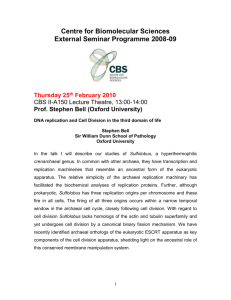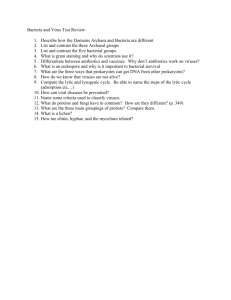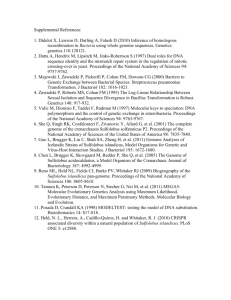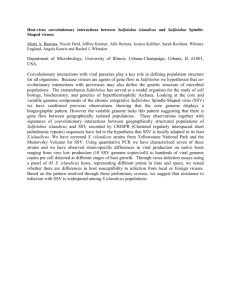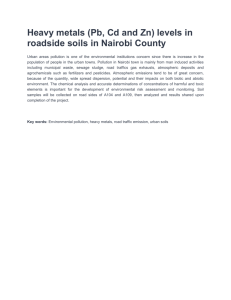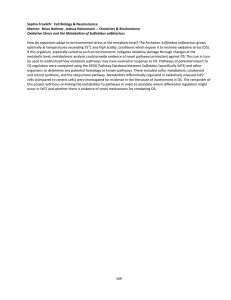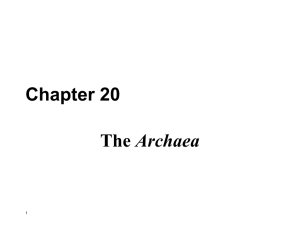COLLEGE OF LETTERS & SCIENCE
advertisement
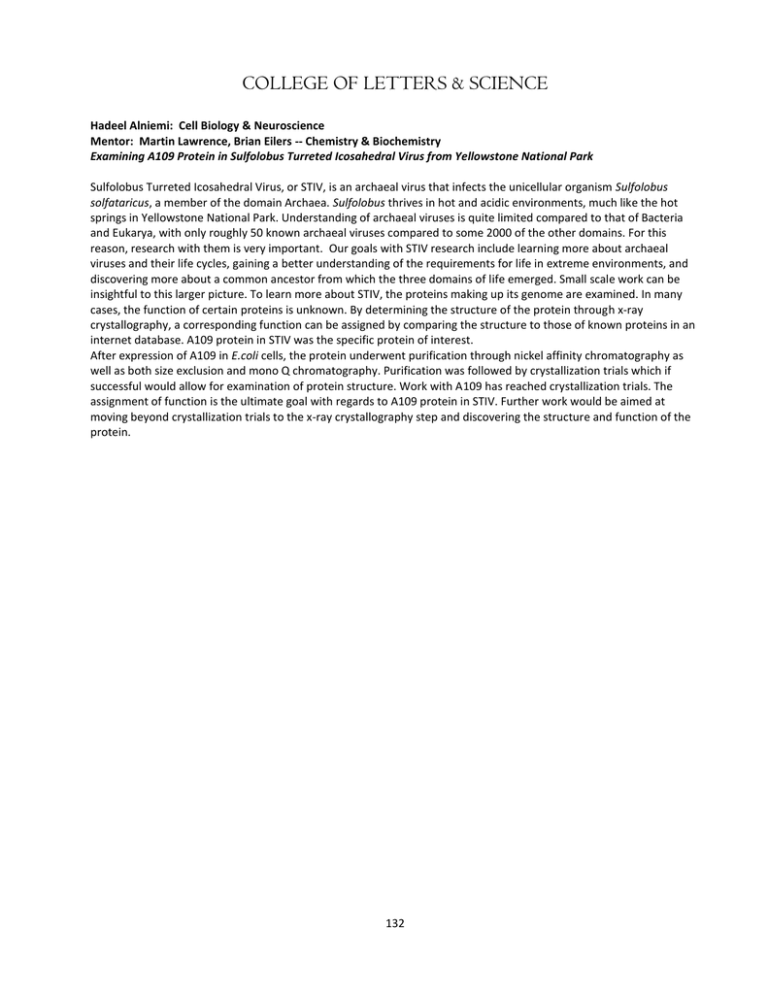
COLLEGE OF LETTERS & SCIENCE Hadeel Alniemi: Cell Biology & Neuroscience Mentor: Martin Lawrence, Brian Eilers -- Chemistry & Biochemistry Examining A109 Protein in Sulfolobus Turreted Icosahedral Virus from Yellowstone National Park Sulfolobus Turreted Icosahedral Virus, or STIV, is an archaeal virus that infects the unicellular organism Sulfolobus solfataricus, a member of the domain Archaea. Sulfolobus thrives in hot and acidic environments, much like the hot springs in Yellowstone National Park. Understanding of archaeal viruses is quite limited compared to that of Bacteria and Eukarya, with only roughly 50 known archaeal viruses compared to some 2000 of the other domains. For this reason, research with them is very important. Our goals with STIV research include learning more about archaeal viruses and their life cycles, gaining a better understanding of the requirements for life in extreme environments, and discovering more about a common ancestor from which the three domains of life emerged. Small scale work can be insightful to this larger picture. To learn more about STIV, the proteins making up its genome are examined. In many cases, the function of certain proteins is unknown. By determining the structure of the protein through x-ray crystallography, a corresponding function can be assigned by comparing the structure to those of known proteins in an internet database. A109 protein in STIV was the specific protein of interest. After expression of A109 in E.coli cells, the protein underwent purification through nickel affinity chromatography as well as both size exclusion and mono Q chromatography. Purification was followed by crystallization trials which if successful would allow for examination of protein structure. Work with A109 has reached crystallization trials. The assignment of function is the ultimate goal with regards to A109 protein in STIV. Further work would be aimed at moving beyond crystallization trials to the x-ray crystallography step and discovering the structure and function of the protein. 132
